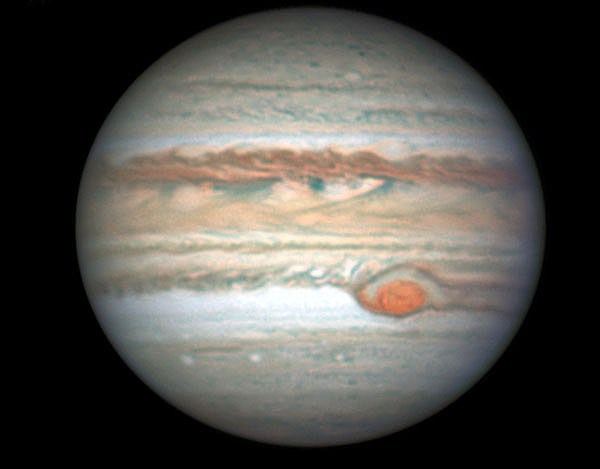The planet Jupiter is always one of the brightest objects in the night sky. It’s brighter than any star, and is only outshone by the planet Venus and the Moon, and, very rarely, by Mars and Mercury (when it’s too close to the Sun to observe). Jupiter reaches a position for optimum viewing in a telescope once every 13 months, roughly, and it makes its latest closest approach to Earth on December 7, 2024 at 21h Universal Time when the planet appears in the horns of the celestial bull, Taurus. A couple of months before and after this date, Jupiter is in perfect position for viewing with a small telescope, or even a pair of binoculars. You can’t miss it: the planet is by far the brightest object in the eastern sky as night gets underway in the northern hemisphere from now through March and April of 2025. The visible face of Jupiter reveals so many interesting features in a small telescope that the planet is a favorite target for new and experienced stargazers [Read more…] about A Guide to Observing Jupiter in 2024
Share This:jupiter
The Disappearing Great Red Spot

Second only to the rings of Saturn, Jupiter’s Great Red Spot (GRS) is probably the most iconic planetary feature in the solar system. Unlike the rings, which aren’t going away any time soon, recent observations of an apparent unraveling of the GRS suggest big changes in this iconic feature, if not its impending demise [Read more…] about The Disappearing Great Red Spot
Share This:Farewell to Jupiter, and Hello

If you’ve been following the news this week, you know that Jupiter has a new moon, a man-made moon called Juno. The NASA spacecraft, bejeweled with solar cells and as big as a basketball court, entered an elongated orbit around the big planet on July 4 as it began a 20-month study of the structure of Jupiter. While Jupiter may be fading in the western sky after sunset, still visible but soon to be lost to our telescopes, it will continue to reveal many secrets to Juno during the coming months [Read more…] about Farewell to Jupiter, and Hello
Share This:An Observer’s Guide to the Planet Jupiter
The planet Jupiter is always one of the brightest objects in the night sky. It’s brighter than any star, and is only outshone by the planet Venus and the Moon, and, very rarely, by Mars and Mercury. Jupiter reaches a position for optimum viewing in a telescope once every 13 months, roughly, and as you are about to discover, the visible face of Jupiter reveals so many interesting features in a small telescope that the planet is a favorite target for new and experienced stargazers [Read more…] about An Observer’s Guide to the Planet Jupiter
Share This:Mars, Jupiter, and Venus in This Morning’s Sky
A great view of Mars, Jupiter, and Venus (in order of increasing brightness) over the Canadian prairies in the morning sky on October 27, 2015 by Alan Dyer at AmazingSky.com.
The trio of planets, Mars, Venus & Jupiter, in #conjunction in the moonlit morning sky, Oct 27, from home in Alberta pic.twitter.com/6PyL5aH6s2
— Alan Dyer (@amazingskyguy) October 27, 2015
Share This: